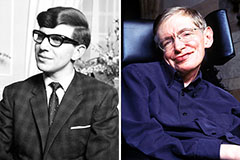Lighting in 3D animation is really a critical factor that establishes how a scene is perceived by the viewer. It’s not pretty much visibility—it’s about storytelling, temper, realism, and focus. When employed skillfully, lights can rework a essential 3D model right into a visually beautiful and emotionally persuasive practical experience. From films and video clip game titles to promotion and architectural visualization, lights plays a vital position in shaping how digital content material feels and capabilities.
The objective of Lights in 3D Animation
Much like in images or Reside-motion cinematography, lights in 3D animation defines how subjects are viewed and interpreted. It establishes time of day, climatic conditions, ambiance, and emotional tone. It may make a personality appear heroic, sinister, lonely, or joyful—all and not using a single line of dialogue. In a nutshell, lights is each a complex requirement and a Artistic chance.
Contrary to genuine-entire world lights, 3D lights is absolutely controllable. Animators can fine-tune each and every factor, which includes depth, colour, direction, shadows, and diffusion. This Command allows for a variety of variations, from hyper-practical renderings to stylized, artistic visuals.
Main 3D Lighting Procedures
1. A few-Place Lighting
3-stage lights can be a foundational method that is made of a essential light, fill gentle, and back mild:
Key Mild: The main source of gentle, generally positioned to your facet of the subject to generate depth.
Fill Light-weight: A softer light placed on the opposite aspect to lessen severe shadows in the essential light.
Back Light: Positioned powering the subject to create separation from the background, maximizing depth.
This typical set up generates a balanced, professional look and is particularly commonly utilized for character-concentrated scenes.
2. Worldwide Illumination (GI)
Worldwide Illumination simulates the way light-weight bounces off surfaces, illuminating spots that aren’t specifically hit by a light-weight resource. It generates realistic interactions involving lights and objects, including shade bleeding and gentle shadows. GI provides a volume of normal realism that static lights setups can’t attain on their own.
3. Graphic-Based Lighting (IBL)
IBL uses Large Dynamic Array Pictures (HDRIs) to mild a scene. These 360-degree photographs simulate serious-world environments, supplying accurate lights and reflections. IBL is very practical in item rendering and reasonable outdoor scenes, exactly where environmental lighting is complex.
four. Volumetric Lights
Volumetric lighting simulates light-weight interacting with particles during the air, such as fog, smoke, or dust. This system generates noticeable beams or rays of sunshine that increase atmosphere and temper. It’s frequently Employed in fantasy or sci-fi settings so as to add drama and visual desire.
5. Lights for Emotion and Mood
Light-weight colour and distinction can affect how a scene feels. Warm lighting usually conveys https://86bet.io/ convenience, nostalgia, or tension, when great lights implies calmness, disappointment, or secret. Superior contrast can incorporate intensity, when low contrast generates softness and serenity.
Summary
3D animation lights is the two a science and an artwork. It necessitates technical understanding of instruments and computer software, and an intuitive sense of composition and emotion. When used skillfully, lights can elevate a simple scene into one thing amazing, boosting storytelling and interesting audiences in meaningful techniques. As technological know-how evolves, so does the potential for lights to push the boundaries of what’s feasible in animation.
 Rick Moranis Then & Now!
Rick Moranis Then & Now! Taran Noah Smith Then & Now!
Taran Noah Smith Then & Now! James Van Der Beek Then & Now!
James Van Der Beek Then & Now! Stephen Hawking Then & Now!
Stephen Hawking Then & Now! The Olsen Twins Then & Now!
The Olsen Twins Then & Now!